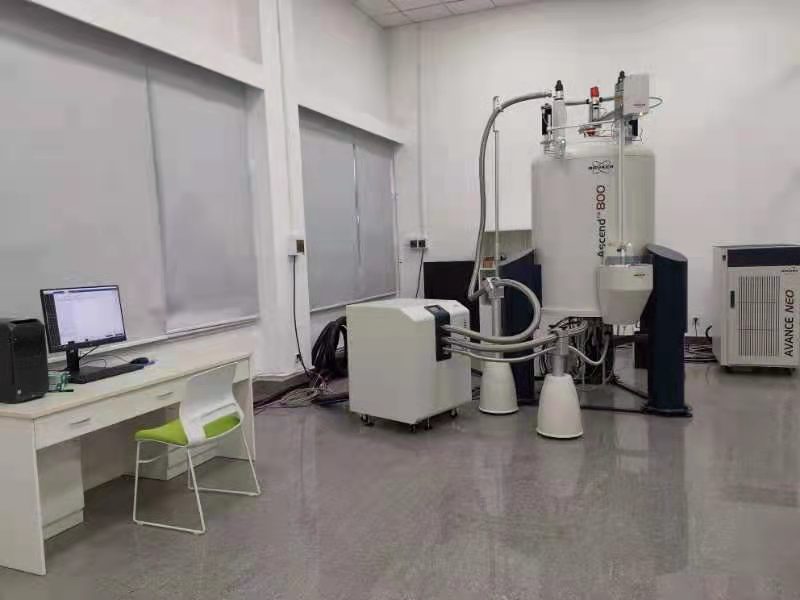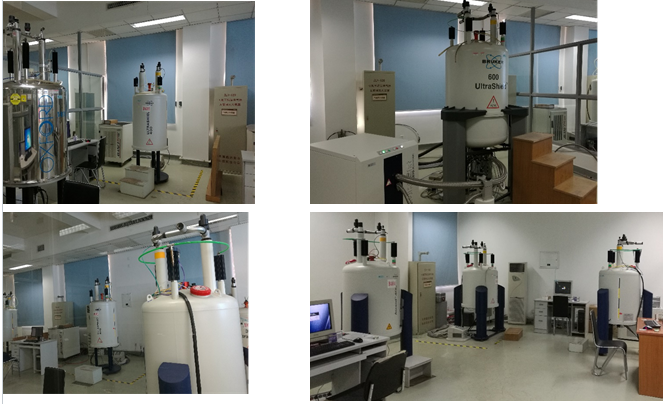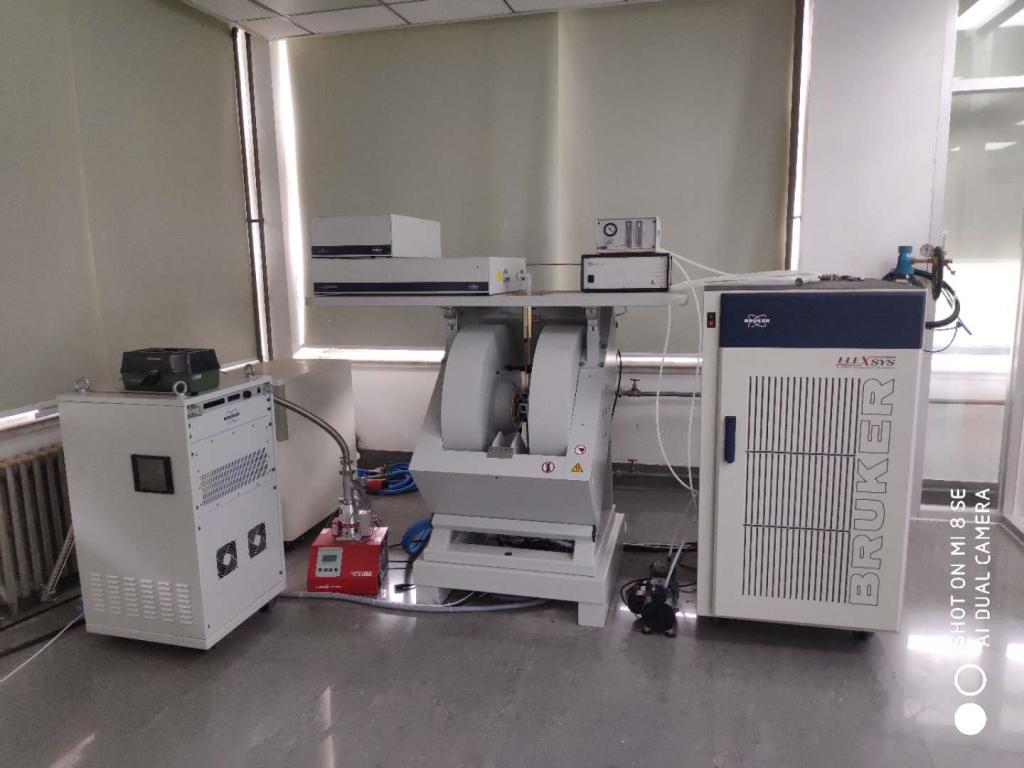
Current Location : Home > Facility > Introduction > Magnetic Resonance Platform
NMR Platform
Presently, the nuclear magnetic resonance instrument platform of the State Key Laboratory of Elemento-organic Chemistry is equipped with 12 high-resolution nuclear magnetic resonance spectrometers for organic chemistry and structural biology research, including nine 400MHz spectrometers, one 800MHz spectrometer, and one 600MHz spectrometer ( 800MHz spectrometer,and 600MHz spectrometer are equipped with a QCI-ultra-low temperature probe).
These nuclear magnetic spectrometers serve different purposes and may be applied in temperature variation NMR experiments, structure elucidations, heteronuclear and bio-macromolecule experiments. These equipments act as important tools for structure elucidation of organic molecules, studies of reaction mechanism, and rsearch into protein structure and dynamics.
The common experiments include one-dimensional 1H spectrum, 13C spectrum, and other heteronuclear and two-dimensional homonuclear including NOESY, COSY, TOCSY, and DOSY. Two-dimensional heteronuclear experiments consist of HSQC, HMQC, and HMBC. General experiments involve solvent peak suppression, chemical reaction dynamics experiments EXSY, and variable temperature experiments. In addition, there is also a Varian 400MHz spectrometer equipped with a 19F probe for 19F-NMR.
The Bruker 400MHz B-405 and B-406 spectrometers are equipped with carbon-hydrogen double probes. These instruments have relatively high sensitivity to carbon and hydrogen, suitable for NMR spectrums of carbon and hydrogen. B-407 spectrometer is fitted with a variable temperature unit, supporting routine experiments of -40°C-80°C.
The Bruker 600MHz spectrometer is equipped with QCI-ultra-low temperature probe, which may be applied in the structural elucidation of natural products and studies of bio-macromolecule structure, function, and dynamics.
Managers
Xuncheng Su: Su joined State Kay Laboratory of Elemento-organic Chemistry (Nankai University) as PCOSS-Fellow at September 2010. His group mainly engage in NMR methodology and structural biology research.
Shuzhong Zhang: Zhang experts in molecular simulation and was involved in the construction of NMR platform at 2003. At 2004 he gained the grand prize of teaching and experimental techniques at Nankai University.
Shengqing Wu: Wu embarked on NMR platform construction and management in August, 2008.


Electron Paramagnetic Resonance (EPR) Platform
EPR platform at State Kay Laboratory of Elemento-organic Chemistry (Nankai University) possesses one Bruker E580-10/12 ELEXSYS spectrometer with CW/FT difunctional microwave bridge. This EPR can qualitatively and quantitatively test the unpaired electrons in the atoms and molecules, which can be widely used for the subjects of physics, chemistry, biomedicine, environment and materials. In the continuous wave pattern, this equipment is served with ultra-sensitivity EPR resonant cavity. And this equipment also uses Specjet and Patternjet microwave module and Flexline split ring resonant cavity. The main function of its pulse includes gathering EPR spectrum and testing spin relaxation time on the basis of FT EPR and electron spin echo technology. It tests spin density distribution and distance via the hyperfine interaction between electron and nucleus with ESEEM and 2D-HYSCORE. SECSY and EXSY are used for testing relevancy and exchange rate. Pulse of ELDOR and DEER test long distance via electron-electron spin dipole coupling, and ENOR tests hyperfine interaction and nucleus spin relaxation.

Contact: Yin Yang
Email: eocepr@126.com
Phone:13821269976